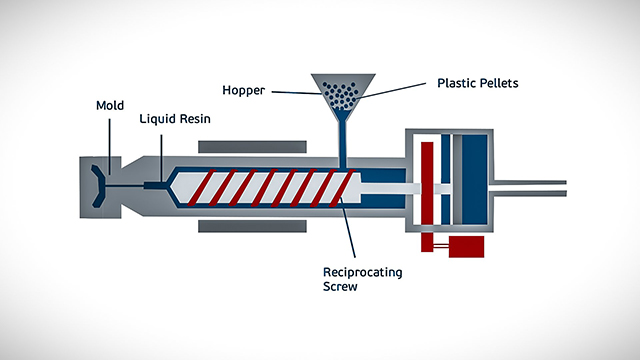Fast-Tracking Innovation: Unveiling the Top Applications of Rapid Injection Molding
In the fast-paced world of product development, speed and efficiency are paramount. Companies are constantly seeking innovative solutions to bring their ideas to market faster while maintaining quality and reducing costs. One of the standout technologies that has emerged to meet these demands is rapid injection molding. This process transforms the way businesses approach product design and manufacturing, allowing for quicker turnaround times and the ability to produce high-quality prototypes.
Rapid injection molding is particularly valuable across various industries, including automotive, healthcare, consumer goods, and electronics. By utilizing advanced techniques and materials, it enables the production of intricate designs with precision and consistency. As we delve into the main applications of rapid injection molding, we will uncover how this technology is revolutionizing product development and empowering businesses to innovate at an unprecedented pace.
Understanding Rapid Injection Molding
Rapid injection molding is an advanced manufacturing technique that enables the swift production of plastic parts through the use of specialized molds. This process significantly reduces the time needed for prototyping and manufacturing, making it highly beneficial for product development cycles. By utilizing materials such as thermoplastics and thermosetting polymers, rapid injection molding can efficiently produce high-quality parts with intricate designs, meeting the demands of various industries.
One of the key advantages of rapid injection molding is its ability to create molds quickly. Traditional methods often involve lengthy lead times for mold fabrication, which can delay project timelines. In contrast, rapid injection molding utilizes techniques like 3D printing and CNC machining to produce molds in a fraction of the time. This speed allows companies to test their designs more rapidly, gather feedback, and make necessary adjustments without significant delays in production.
Moreover, rapid injection molding not only accelerates the prototyping phase but also proves cost-effective for small to medium production runs. By minimizing the initial investment required for mold creation, it allows businesses to launch products faster and start generating revenue sooner. This method is particularly advantageous for startups and companies looking to get their innovations to market swiftly while maintaining flexibility to iterate on designs as needed.
Key Applications in Various Industries
Rapid injection molding has gained significant traction across multiple industries due to its ability to produce high-quality parts at an accelerated pace. In the automotive sector, manufacturers leverage this technology for prototyping and creating components such as dashboards, housings, and under-the-hood parts. The reduced lead times enable automotive companies to test designs quickly, ensuring that they stay competitive in an ever-evolving market while optimizing performance and safety features.
In the consumer products domain, rapid injection molding is utilized for creating intricate designs that enhance user experience. Companies focus on producing items like kitchen gadgets, electronic casings, and personal care products. The capability to rapidly iterate on designs allows for faster rollout of innovative products, catering to shifting consumer preferences while maintaining high standards of quality and functionality.
The medical industry also benefits tremendously from rapid injection molding by enabling the production of precise and reliable components, including surgical instruments, drug delivery devices, and diagnostic equipment. The rapid turnaround time not only accelerates the development of life-saving devices but also adheres to stringent regulatory standards, ensuring that products are safe and effective for patient use.
Benefits and Challenges of Rapid Injection Molding
Rapid injection molding offers numerous advantages that make it an attractive choice for product development. One of the primary benefits is the significant reduction in lead time. Traditional injection molding processes can take weeks or even months from design to production, while rapid injection molding can produce functional prototypes and production parts in a matter of days. This expedited timeline allows companies to speed up their product development cycles and bring innovations to market faster, giving them a competitive edge.
Another notable advantage is the cost-effectiveness for low to medium volume production runs. The initial setup costs for molds can be high, but rapid injection molding uses advanced technologies that minimize these expenses, making it feasible to produce smaller quantities without compromising quality. Additionally, the ability to quickly iterate on designs means that manufacturers can easily adapt their products based on customer feedback or market trends, further enhancing their responsiveness to consumer needs.

However, rapid injection molding is not without its challenges. One significant limitation is the restriction on the complexity of part designs due to the rapid tooling techniques used. While it is suitable for many applications, highly intricate geometries may require more traditional methods for optimal results. Furthermore, the materials available for rapid injection molding may be limited compared to standard injection molding, which could affect the performance characteristics of the final product. Balancing these challenges with its benefits is crucial for companies considering this innovative manufacturing process.